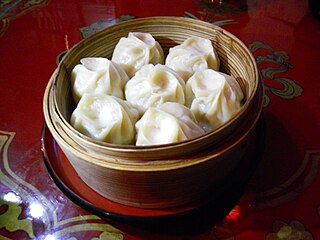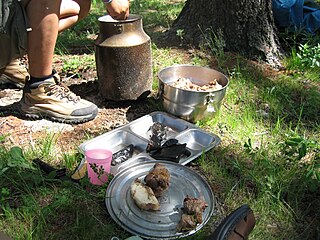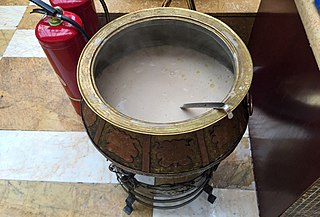 W
WBoortsog or bawïrsaq is a type of fried dough food found in the cuisines of Central Asia, Idel-Ural, Mongolia and the Middle East. It is shaped into either triangles or sometimes spheres. The dough consists of flour, yeast, milk, eggs, margarine, salt, sugar, and fat. Tajik boortsog are often decorated with a criss-cross pattern by pressing the bottom of a small strainer on the dough before it is fried.
 W
WBuryat Cuisine is the traditional cuisine of the Buryats, a Mongolic people who mostly live in the Buryat Republic and around Lake Baikal in Russia. Buryat cuisine shares many dishes in common with Mongolian cuisine and has been influenced by Soviet and Russian cuisine.
 W
WBuuz is a type of Mongolian steamed dumpling filled with meat. An example of authentic Mongolian and Buryatian cuisine, the dish is traditionally eaten at home during Tsagaan Sar, the Lunar New Year. These days it is also offered at restaurants and small cafes throughout the capital of Ulaanbaatar.
 W
WKhorkhog is a barbecue dish in Mongolian cuisine. Khorkhog is made by cooking pieces of meat inside a container which also contains hot stones and water, and is often also heated from the outside.
 W
WKumis is a fermented dairy product traditionally made from mare's milk or donkey milk. The drink remains important to the peoples of the Central Asian steppes, of Huno-Bulgar, Turkic and Mongol origin: Kazakhs, Bashkirs, Kalmyks, Kyrgyz, Mongols, and Yakuts. Kumis was historically consumed by the Khitan, Jurchen, Hungarians and Han Chinese of North China as well.
 W
WSuutei tsai is a traditional Mongolian beverage.
 W
WYak butter/ "Dri Butter" འབྲི་མར། is butter made from the milk of the domesticated yak known as Dri འབྲི།. It is a staple food item and trade item for herding communities in south Central Asia and the Tibetan Plateau. Many different political entities have communities of herders who produce and consume yak's dairy products including cheese and butter – for example, China, India, Mongolia, Nepal, and Tibet.